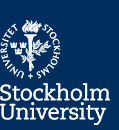
E-government services in the form of information systems (IS) artifacts create a new arena for co-creation that governments aim to leverage. Design of and knowledge about IS artifacts in value co-creation in e-government can thereby be considered valuable for the future development of e-government. How IS artifacts are used in value co-creation and co-destruction and how the artifacts are developed is however not well understood.
This thesis addresses the problem of how to design for and understand value co-creation in e-government. To address the problem stated, three research questions are posed. (i) How can IS artifacts be designed to enable value co-creation in e-government and what aspects can inhibit value being co-created through the designed artifacts? (ii) How can boundary object theory facilitate the understanding of IS artifacts used in value co-creation and co-destruction in e-government? (iii) How can retrospectives in design science contribute to research on value co-creation in e-government?
Two artifacts in the form of instantiations are designed and evaluated. Design science research methodology is used in two different projects at Swedish municipalities. Secondary analysis is used to identify aspects that inhibit value being co-created through the designed IS artifacts. From these inhibitors, core aspects for public value co-creation are derived. Thereafter, this thesis delves further into how IS artifacts are used in collaborations between citizens, private businesses, and government agencies in order to co-create value. Two case studies are carried out at Swedish government agencies and sociomaterial boundary object theory is used to enhance understanding. The thesis research process ends with a retrospective evaluation of the performed research, using critical realism as its philosophical foundation and guidance.
The result includes one configurable process model that enables value co-creation by facilitating shared understanding between collaborating parties; one mobile service that enables value co-creation through citizen sourcing; aspects that inhibit the realization of co-created value; and four core aspects that need to be considered when designing artifacts for value co-creation. That IS artifacts can be regarded as boundary objects when you aim to study and understand value co-creation and co-destruction between communities in e-government. Descriptions of how IS artifacts, viewed as sociomaterial boundary objects, are used in value co-creation processes between governments, citizens, and businesses and outcomes in terms of value co-creation and co-destruction. The benefit of performing critical realism-guided retrospectives in design science in order to complement prescriptive knowledge with explanatory and critical knowledge is motivated. It is showed that the design of artifacts generates knowledge through the design efforts, regardless of whether they also yield utility.
This thesis contributes to e-government research and practice with knowledge on how to design artifacts that enable value co-creation. Establishes sociomaterial boundary object theory as a theoretical lens that offers a tool to evaluate and design IS artifacts that enable value co-creation and with knowledge on how IS artifacts are used in value co-creation. The thesis also motivates the usefulness of retrospective evaluation in design science. Suggestions for future research include further developing design science retrospectives.
Click this link to read the thesis



